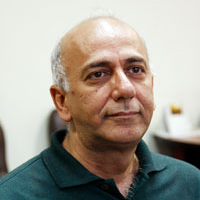The evolution of Mawwal and its late history in the Syrian vocal Nūbāt
Mawwal is one of the literary arts of poetry that was created for singing. Its initial form was eloquent poetry, which gradually changed to slang with a variety of accents, especially Bedouin. It was classified as a subsection of popular music and became an improvisational musical format known as nūbāt repertoire in the Arabic oriental world (Mashriq). This research examined the history and emergence of the Mawwal and the difference about its origin, then crossed to the etymology of the term Mawwal – Mawwalia and showing all of its possibilities. Also the historical transformations of this poetical form is discussed. The musical form initially originated in Iraq in its quadrilateral form. It then transformed into an alternative form, known as the pentagonal, when it reached Egypt. Afterward, it returned to Iraq and evolved into its heptagonal form. Eventually, the musical form made its way to Syria. Since al-Mawwal al-Sharqawi (heptagonal) is the dominant Mawwal in the nūbāt performance, his literary style has been analyzed and described through dialect, terms and letters used, rhyme, enumeration of poetic verses, paronomasia or pun (similar words) and poetic content (general theme). After that the analysis of the heptagonal Mawwal as a musical form in the Syrian nūbāt was started through models of the Aleppo singer Sabah Fakhri and a comparison with the period before and after him and the differences between each period. Through this analysis, this research attempts to derive a specific musical form for the heptagonal Mawwal form in al- nūbāt, while it is an improvised form and does not have specific musical rules agreed among musicians. This research begins by deconstructing the predominant order of conducting the Mawwal parts in the nūbāt and the repeated parts in it. And then a maqam analysis of each part of the Mawwal and where the vocal and maqami peak lies and where the maqam transitions of the same maqam family or for different maqam families and reference to the stage of musical suspension and conclusion. Finally, an extract a musical form of the heptagonal Mawwal template in this way (A B A) and in more detail by indicating the numbers of the poetic parts A (1 + 2 + 3) - B (4 + 5 + 6) - A (7) is shown. This supports the fact that Sabah Fakhri relied on a certain methodology and style in the performance of his mawāwīl, where he used certain melodic and rhythmic phrases that were repeated in most of them. That is, it was based on rules taken from the heritage form, similar to the mawāwīl that preceded it within the nūbāt and greatly influenced the mawāwīl that followed it. The method of this research is deductive and historical with regard to the process of description and analysis. We have gathered fundamental data from various sources, including the analysis of musical performances, analysis of lyrical texts, observations, and interviews. These sources serve as the main foundation for this research.
- حق عضویت دریافتی صرف حمایت از نشریات عضو و نگهداری، تکمیل و توسعه مگیران میشود.
- پرداخت حق اشتراک و دانلود مقالات اجازه بازنشر آن در سایر رسانههای چاپی و دیجیتال را به کاربر نمیدهد.



